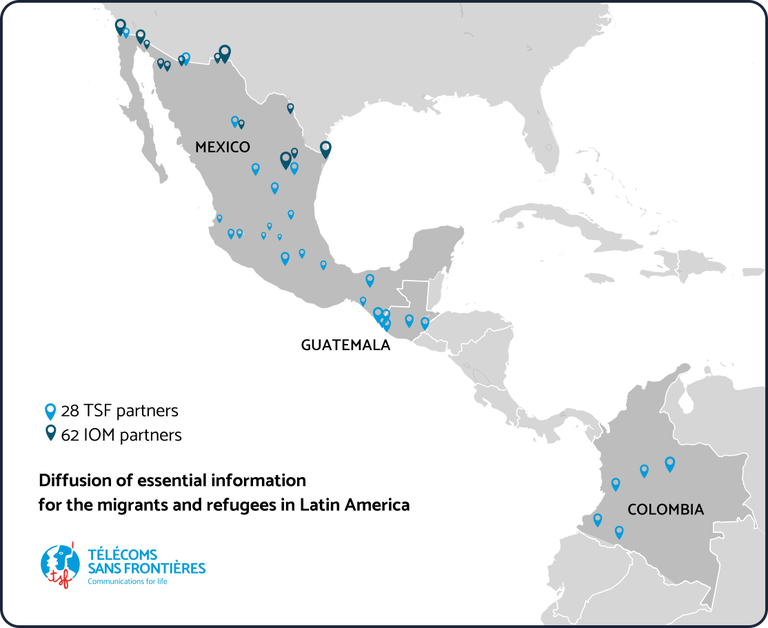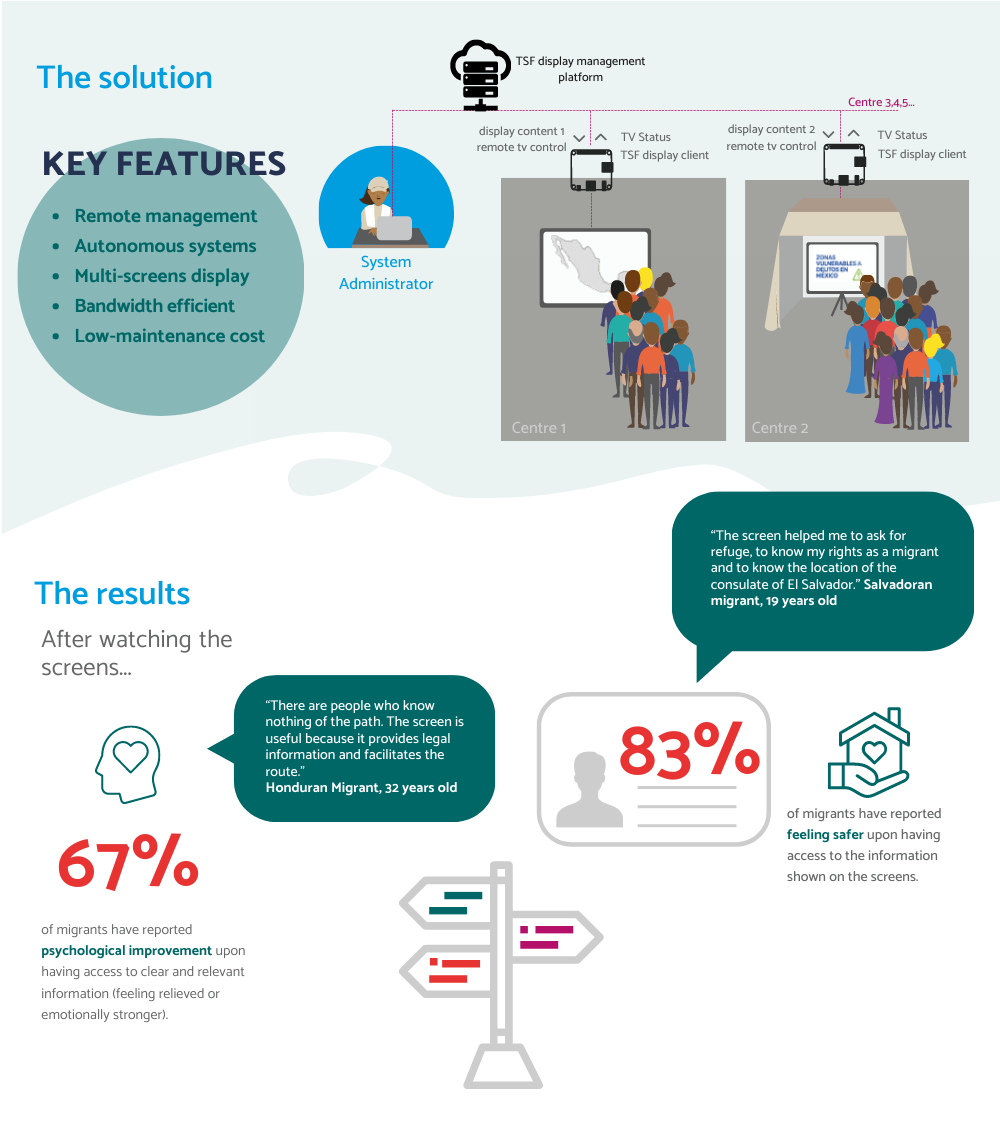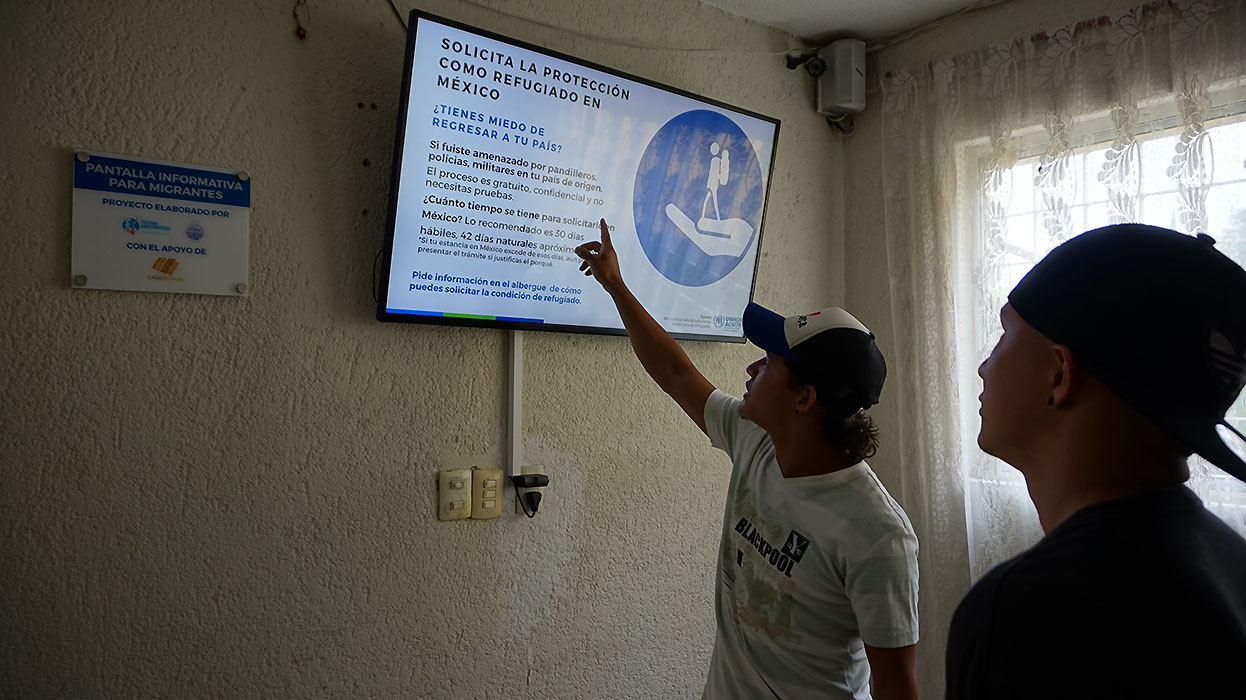Latin American migratory movement
Context: Migration crisis
Start date: 15/10/2017
End date: Ongoing
Areas of intervention: Mexico, Guatemala, Colombia
Activities: Information diffusion
93 centres for refugees equipped
Up to 22, 000 migrant beneficiaries reached per month
623 satisfaction surveys were submitted by participant shelters in the last year
93% of the migrants said that it had a positive impact in their lives
Context
In recent years, the nature of the South-North migration in the Americas has considerably evolved. A growing number of families and unaccompanied minors are fleeing violence, high rates of crime and natural disasters, turning what was previously considered as principally economic migration into a full-scale humanitarian crisis.
Mexico - the main transit country to the North - has introduced humanitarian visas for victims of violence and has eased public policies for asylum seekers. In 2022, over 118,000 individuals applied for asylum in Mexico. This year, roughly 50,000 asylum applications have already been filled by the beginning of May 2023 (UNHCR, 2023).
There is also a growing diversification of migrants’ regions of origin, which today include the Caribbean, South America and Africa.
These people are particularly exposed and often lack access to crucial information that is vital to strengthen their security and make their rights accessible.
Main objectives of the mission
The general objective of the mission is to contribute to the empowerment of migrants and refugees in Latin and Central America, through the improvement of the access to essential information, such as legal, health and education related contents.
The mission of TSF and its partners shelters aim at strengthening and increasing the protection and safety of migrants and refugees in Mexico, Guatemala and Colombia by:
* Supporting their ability to make informed decisions.
* Giving them access to accurate, trustful and timely information.
* Increasing their psychological well-being.
Since its beginnings in 2017, the mission has relied on three tactics to implement its
objectives:
1. QUALITY CONTENT. Continuously updating and improving the content displayed on the screens to provide the most valuable and timely information to migrants regarding their safety, route, human rights, changes on the legislation, health, etc.
2. INCREASED PRESENCE. Increasing the number of screens present along the main migration routes across Mexico and Latin America.
3. STRONG COLLABORATION. Developing alliances with strategic partners, to expand the project's presence and impact in the most efficient manner.
Implementation
Télécoms Sans Frontières has been working alongside local partners to help set up emergency communication means to facilitate the journey of migrants' travelling the western route of the country. This system has been installed in 93 strategically identified centers in Mexico, Colombia and Guatemala.

Information diffusion system
Through its involvement in several protection and assistance projects, TSF has demonstrated that environmental factors such as location and context are a central element for an appropriated response to the needs of exposed populations.
For this specific context, TSF has developed a connected information diffusion solution designed around three criteria:
- Universality (compatibility with conventional TV screens regardless of the country of implementation);
- Low bandwidth consumption which can be optimised for satellite, 2G, 3G;
- Deployable on a large scale through a unified online information management platform.

The solution consists of a network of micro-computers connected through the internet to a central server. The information is transmitted to the devices in real time. Each device is connected to an information screen strategically located in each centre in congruence with the assistance process of the partner institution.
TSF’s objective is to enable the dissemination of reliable and regularly updated information concerning important issues on:
- Their rights and duties;
- The institutions providing help along the route and the services they offer;
- Practical information (security, legal information, weather, health, etc.);
- Asylum procedures;
- News alerts.
The solution developed allows for informed decision-making and, consequently, helps to reduce the vulnerability of those fleeing violence, while strengthening the coordination of institutions seeking to serve them.
The source of this information is provided by international and national organisations involved in the management of migration crises such as the United Nations Refugee Agency (UNHCR), the International Committee of the Red Cross (ICRC), FM4 Paso Libre, Centro PRO Derechos Humanos and Médecins Du Monde. The administrator of the system, supported by TSF, remotely ensures a regular update of content from the FM4 centre.
Testimonies
“Migrants in general are significantly unaware of Mexican law when they arrive… they are very vulnerable regarding their human rights… it is also important for them to know where to go to receive healthcare, which is the route to get to a medical centre or a hospital.” – Juan Carlos, manager of the shelter in Tapachula.
“The content is very easy to understand, with a simple language and the pictures are attractive so that people don't get bored when reading.” – Daniela, CAFEMIN shelter manager.
“The screen helped me to ask for refuge, to know my rights as a migrant and to know the location of the consulate of El Salvador.” – 19 year-old Salvadoran migrant.
“Giving people information helps them know what to do and where to go, empowers them to manage things” – Shelter manager at shelter in collaboration with IOM in Tijuana, Baja California.




















